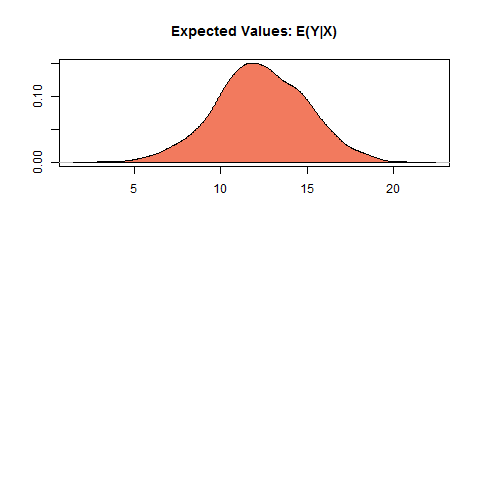I'm running simulation on a linear model. I get 1000 results and the results are put into a density chart. I do understand that the xaxis is the dependent variable and yaxis represent the kernel density. Yaxis is in decimal numbers like from 0 to 0.15 . How do I explain this to the other users? There is a 15% chance that the simulated values will fall between x1 and x2?
This is my simulation output:
summary(s)
Model: ls
Number of simulations: 1000
Values of X
(Intercept) Volume
1 1 1699992
attr(,"assign")
[1] 0 1
Expected Values: E(Y|X)
mean sd 50% 2.5% 97.5%
1 12.305 2.638 12.231 7.03 17.512

